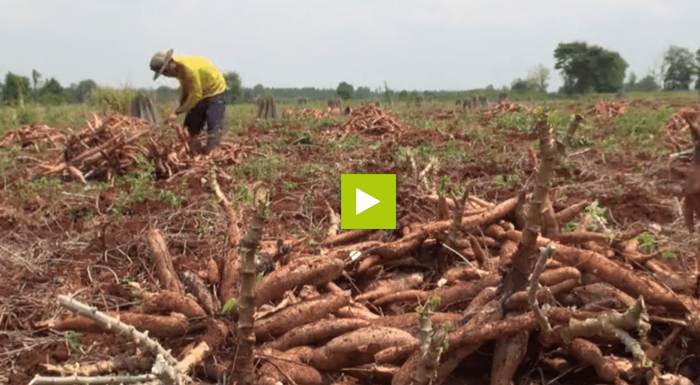Cassava provides food, however rainwater washes fertile soil and cassava yields reduce. Good cassava harvest requires reducing soil erosion and building up a healthy soil.
First, pile crop residues 20 cm apart along contour lines and plant hedges and legumes to reduce rain water run off. Allow water to infiltrate and settling of washed soil. Also establish ridges on gentle slopes to improve soil water infiltration. Likewise apply organic manure to improve soil productivity and make planting holes 1 metre along contour lines, but spacing can be reduced if soil is poor.
Nitrogen, Phosphorus and Potassium
You can enrich nutrients by applying a handful of compost for better cassava growth, but do not put fresh manure on top of soil, since it can easily evaporate and washed off. Also apply N, P, K in each hole beside the compost to encourage early canopy formation and increase yields. Chop high yielding cassava varieties into 15 – 20 cm that produce abundant leaves and place with buds facing upwards with base towards compost.
Intercropping
At 2-3 months after planting apply nitrogen or potassium as they are the major nutrients for cassava growing. However do not apply during rain and prolonged conditions to avoid loss of nutrients. Intercrop cassava with short duration legumes to protect the soil against weeds, improve nitrogen amount in soil and reduce labour force. Make sure to exchange ideas on soil fertility measures with other farmers.



















